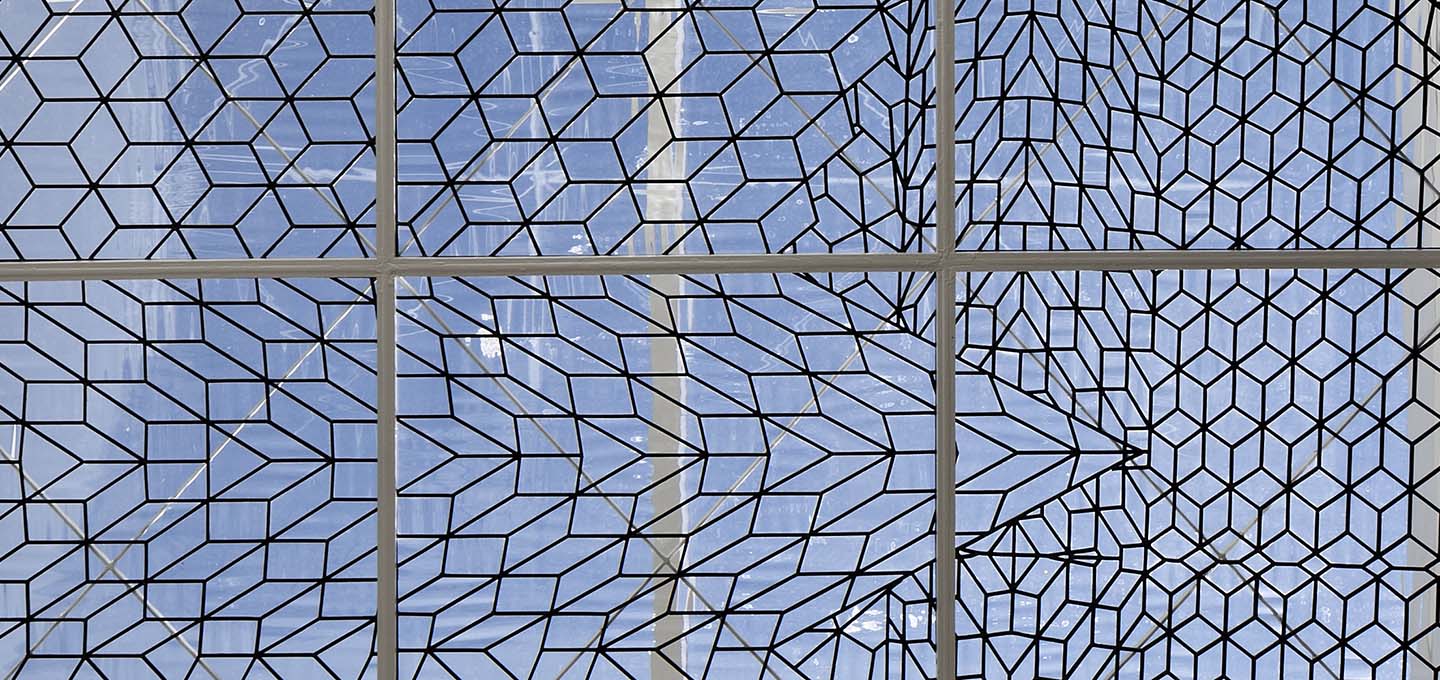
Illustrated Glossary
Over 50 Years of Excellence in Stained Glass Craft and Conservation
A
Abrade
To grind away the coloured upper surface of a flashed glass, revealing the base glass beneath. Tell-tale scratches left by the grinding tool will often remain around the edges of the abraded area. This technique is most commonly found in the context of flashed ruby glass.
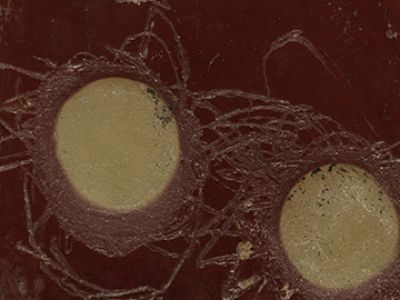
Armature
A shaped iron framework inserted into a lancet window-opening to provide support for panels of stained glass. Armatures were common until the late thirteenth-century.
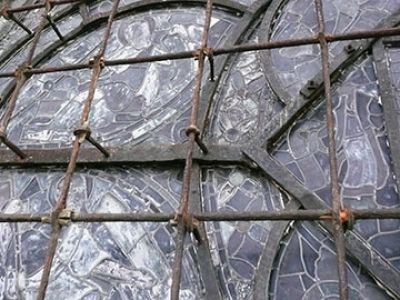
B
Back-painting
Painting applied to the exterior surface of the glass.
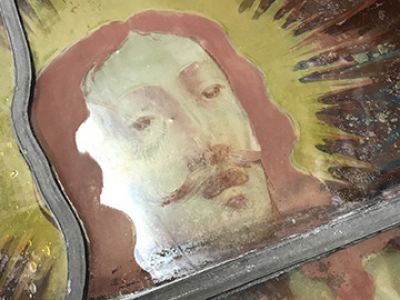
Badger
A broad brush, traditionally made of badger hair, used to spread glass-paint evenly across the glass.
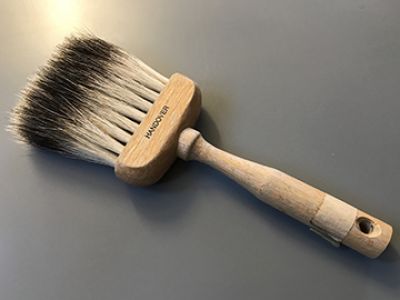
Bull's Eye
The raised knob of glass marking the point at which the pontil iron was formerly attached to the centre of a crown of glass. These thickened pieces are usually cut off and discarded, although in the interest of economy they were sometimes used for decorative effect in less expensive secular or domestic settings.
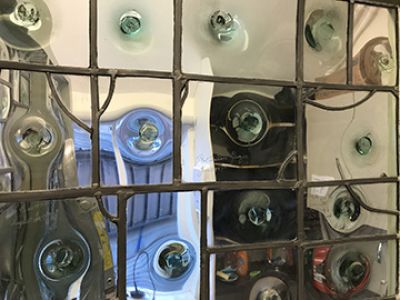
C
Calmes or Cames
From the Latin calamus, meaning a read. Cast strips of lead, H-shaped in section and cut to the requisite length, were used to hold glass pieces together in the assembly of a stained glass panel. The centre of the lead is called the heart, while the overlapping areas that cover the glass's edges are called the flange or leaf. From the end of the sixteenth-century onwards calmed were milled rather than cast. Milled lead often reveals the marks of the teeth of the lead mill on the heart, which can sometimes be inscribed with names and dates. Leads are soldered at the intersections in order to make the panels rigid and strong.
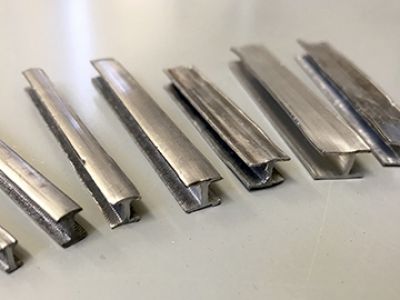
Cartoon
The full-size outline drawing from which a stained glass panel is made. For much of the medieval period, the cartoon was drawn on a whitened table and was not, therefore, preserved at full size. Only in the seventeenth-century were cartoons marked out on paper, meaning that they could more easily be stored and retained for adaption and re-use.
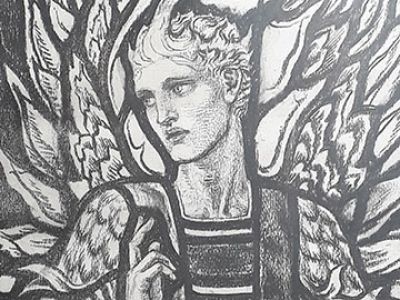
Corrosion
The deterioration of the glass surface, usually the result of chemical decomposition of the base glass brought about by exposure to moisture. The process can manifest itself in pitting or crusting of the surface and will eventually reduce the thickness of the glass, and/or result in holes. Any surface decoration is lost as a result.
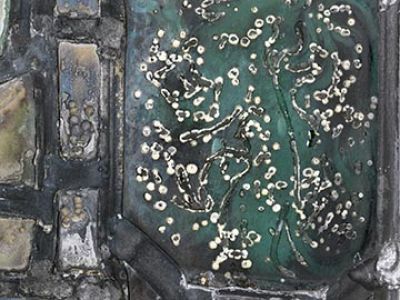
Cross-Hatching
A network of fine intersecting painted lines used to model or shade areas of a design.
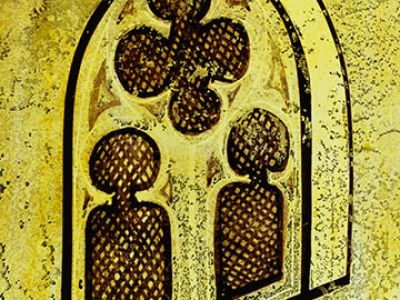
Crown Glass
Made by spinning a cylinder of glass still attached to the pontil iron, so that centrifugal forces open and flatten the glass into a circular sheet.
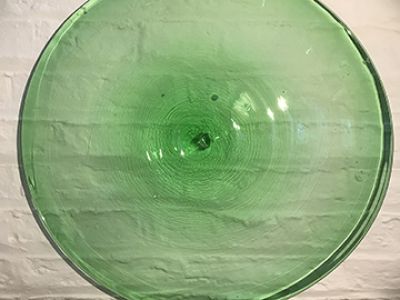
D
Diaper
A repeated geometrical pattern often used to decorate a background or drapery.
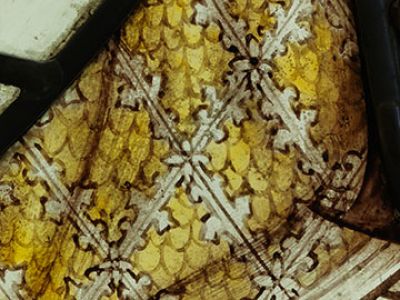
E
Enamel
A coloured painting pigment made from a metallic oxide mixed with a flux of molten glass. This can be fired to the interior surface of an uncoloured base glass, allowing a multi-coloured painterly effect comparable to the application of paint to a canvas.
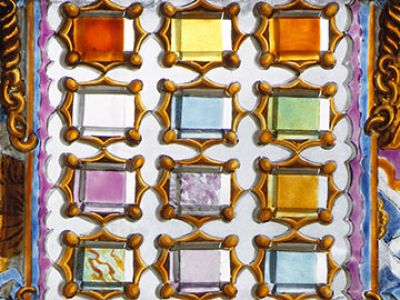
F
Ferramenta
The general term denoting the range of ironwork set into the masonry of a window to provide support for stained glass panels (see also armature, stanchion, lug-bar, and T-bar).
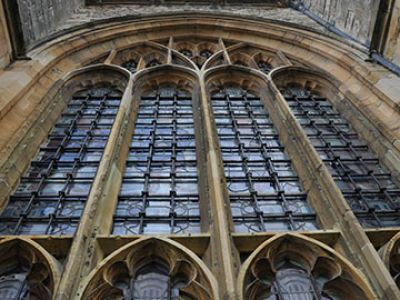
Flashed Glass
A coloured glass made by the application of a thin layer of coloured glass to a base glass of another colour (most commonly uncoloured glass) during the blowing of a sheet. The flashed outer surface can either be ground away (abraded) or removed with acid (acid-etched) to create complex decorative effects. This is most commonly found as red on an uncoloured base (flashed ruby).
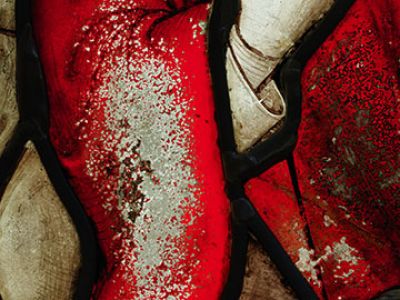
G
Glass Paint
A mixture of finely ground glass, iron, or copper oxide, and a flux. When mixed with a binding medium and diluted to a range of consistencies, the paint can be applied and then fired to the surface of the glass.
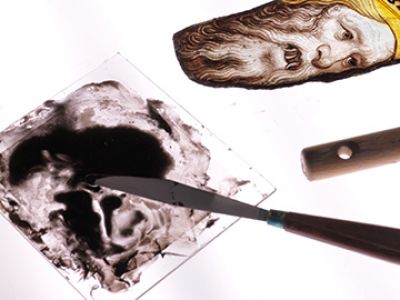
Grozing Iron
A flat, grooved metal tool used to cut and shape glass throughout the medieval period. Glass cut with a grozing iron has a distinctive nibbled and chamfered edge.
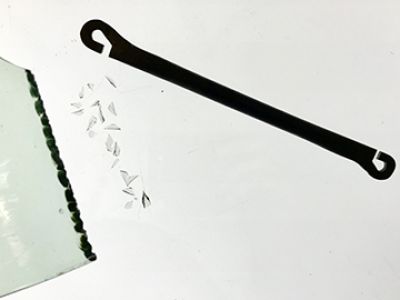
J
Jewelled Insertions
Sometimes called drilled insertions. These are made by drilling a hole into the middle of the glass, and inserting another piece of glass inside. Prized as a technique for its technical complexity.
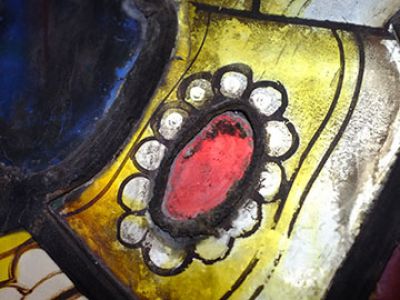
L
Lug Bar
A flat, slotted support bar to which stained glass panels are attached using a wedge of metal.
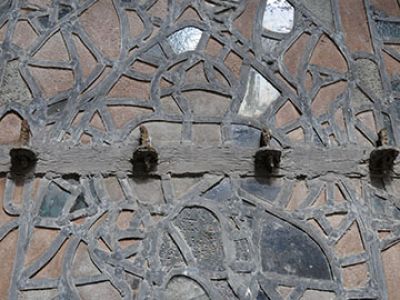
M
Matte
An even, overall wash of glass paint.
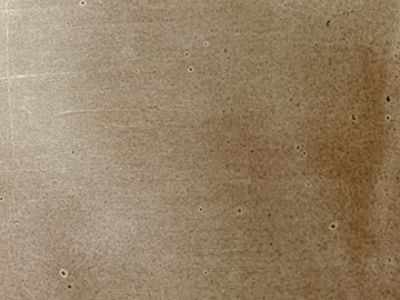
Muff Glass
A large cylinder of blown glass, cut along its length while still hot and flattened to form a sheet from which stained glass can be made.
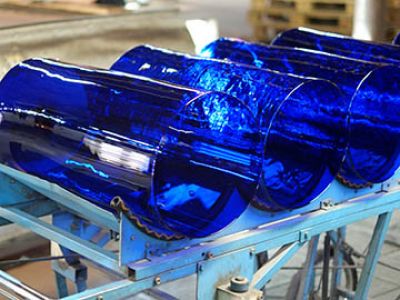
Murrey
A glass colour ranging from purple to browny-pink.

P
Pitting
The phenomenon of small craters or cavities in the surface of the glass, caused by the processes of corrosion.
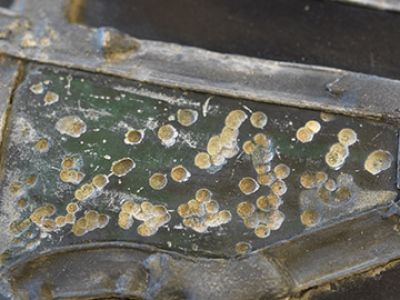
Plating
The doubling up of glass by the attachment of an additional layer, held together within a single lead. This can be part of an artistic technique, used as a means of modifying or intensifying colour or texture, or can be used as a protective measure during the conservation of fragile or crumbling glass pieces.
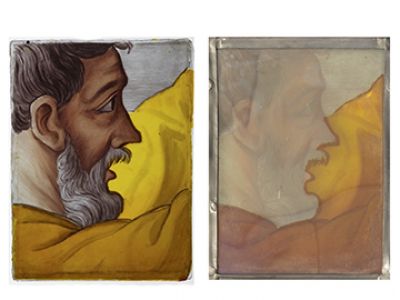
Pot-Metal
Glass coloured throughout its thickness when molten (i.e. in the melting pot), with the addition of one or more metallic oxides.
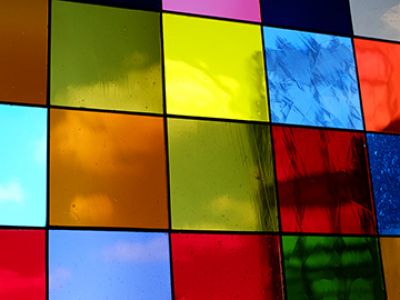
Q
Quarry
From the French carré, meaning square. A small pane of glass, usually diamond-shaped, but can also be rectangular or square. Quarries can be plain or painted with a decorative motif.
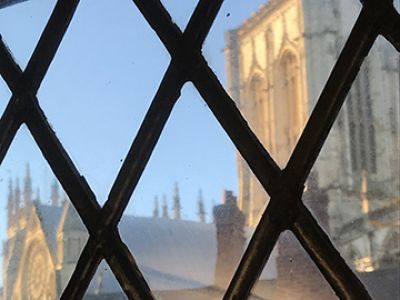
R
Rinceau
A foliate design used to decorate background or drapery.
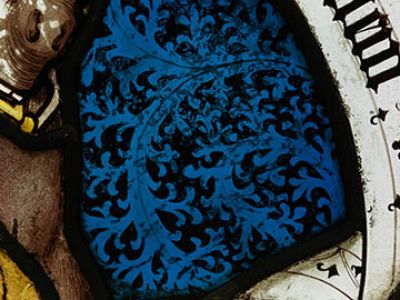
Roundel
A general term used to denote a unipartite panel, usually circular, but sometimes oval or even rectangular, bearing a self-contained design.
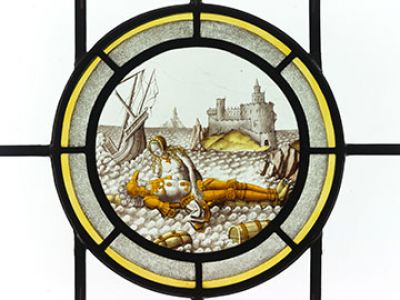
Ruby
Red glass, usually made by flashing a thin layer of red glass onto an uncoloured base glass. This is necessary, as an un-flashed red glass would appear opaque when held to the light.
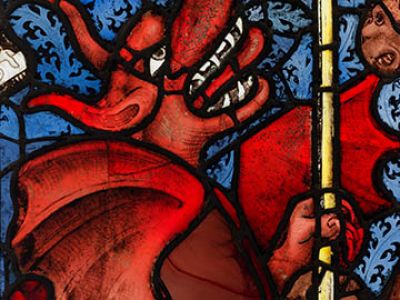
S
Saddle Bar (or Tie Bar)
A bar set horizontally into the masonry of the window opening to which stained glass panels are tied with lead or copper ties, supporting and preventing panels from flexing out of the vertical plane.
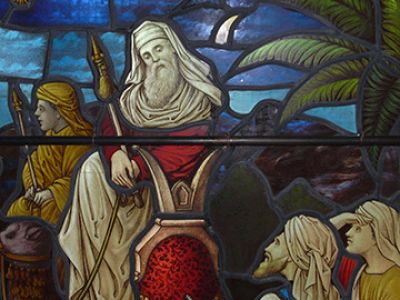
Sanguine
A distinctive iron-based painting pigment, first introduced in the sixteenth-century, that turns pink to red-brown after firing.

Silver Stain (or Yellow Stain)
A surface stain produced by the application of a silver compound to base glass. When fired, the stain turns yellow, ranging in hue from pale lemon to dark orange. It is normally applied to the exterior surface of the glass. Used in stained glass since the early fourteenth-century.
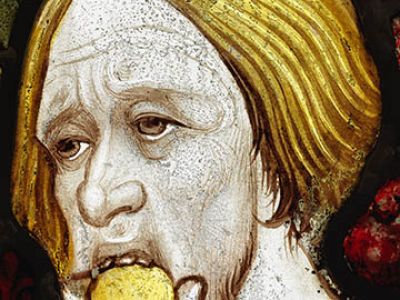
Smear Shading
An application of thin paint to the glass.
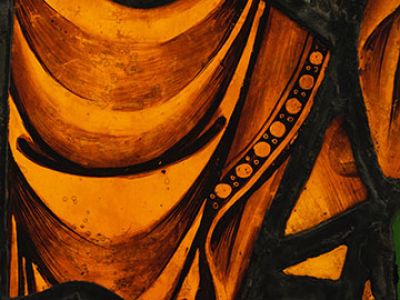
Stanchion
The vertical support bar set into the masonry, internally or externally (or both). In some cases, the stanchion passes through a lug in the saddle bar.
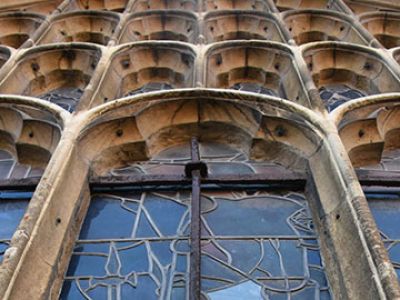
Stickwork
Also called needlework or scratching-out. The technique of picking out a design or detail from a layer of glass paint, allowing light and colour to show through. A variety of fine pointed tools are used, including needles, quills, pointed sticks, or the end of the paint brush.
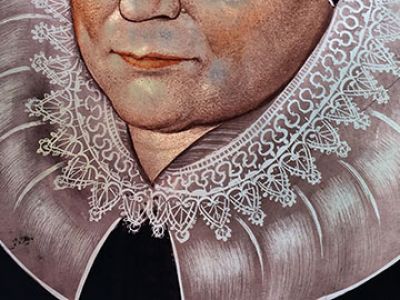
Stipple Shading
A method of modelling achieved by dabbing the wet surface of unfired glass paint, usually with the bristles of a dry brush.
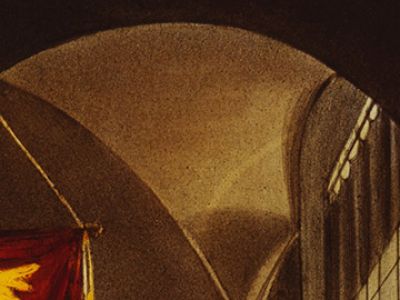
T
T-Bar
T-shaped in section, and set horizontally into the masonry of a window opening at the divisions between the stained glass panels. Each bar supports and spreads the vertical weight of the panels resting on them.
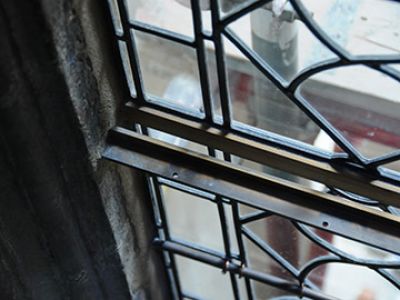
Trace Line
A strong line of paint, delineating the main lines of a design.
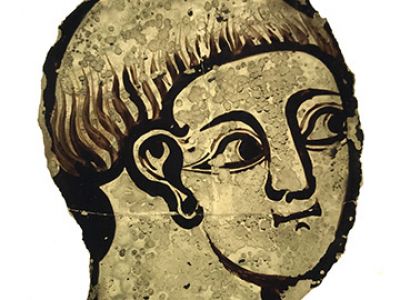
Tracery
The elaborately shaped openings at the head of the window.
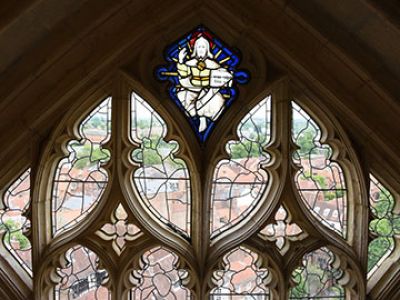
V
Vidimus
Latin for 'we have seen'. A term used to denote the scaled down design for a window, prepared prior to the preparation of a full-size cartoon.
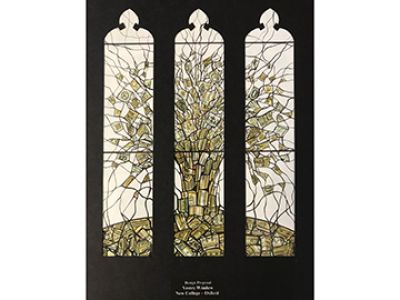
Get In Touch
If you would like more information on our conservation services please get in touch.
Contact UsContact Us
The York Glaziers Trust, 6 Deangate, York, YO1 7JB




